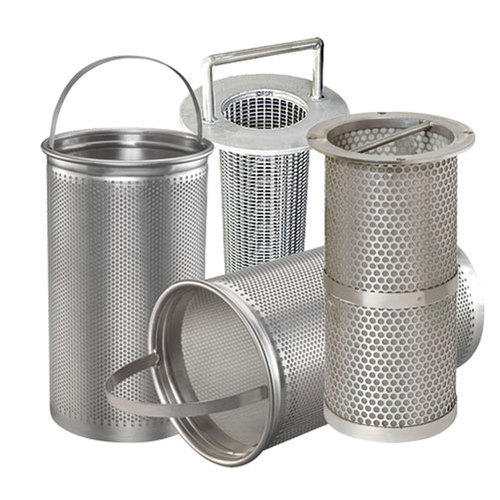How to chose a good strainer?
One of the key factors when purchasing a strainer is specifying the perforation or mesh size of the straining element. The straining element (generally mentioned as a screen for strainers and a basket for basket strainers) is a mechanical filter which retains particles which are too large to pass through, while at the same time allows the flowing media (liquid or gas) to pass smoothly. By cleaning the flowing media, the straining element contributes to protect costly downstream equipment such as pumps, meters, spray nozzles, compressors, and turbines.
Determining Opening Size:
Generally speaking, screen openings should be approximately one-half the diameter of the largest allowable particle. The largest permissible particle is defined as the size of particle that can pass through downstream equipment without causing damage. For example, if the maximum permissible particle is 1/16 inch than the screen opening would be specified at 1/32 inch. In addition to the size of particles, the quantity of debris in the flowing media must also be considered when determining the appropriate opening size.
Straining elements can only be used to remove insoluble floating impurities. The most common range of particle retention is 1 inch down to 40 microns (.0015 inch). A good strainer should always be installed ahead of pumps and other expensive, downstream equipment to help ensure proper protection and trouble-free operation. This even holds true for "clean lines" to protect against scale and accidentally introduced items such as: tools, gaskets, nuts, or bolts.
A common mistake is for a screen opening is small for the application. This can result in overstraining and should be avoided for the following reasons:
• Maintenance costs are increased because excessive cleaning requirements.
• Pressure drop is increased dramatically.
• The straining element may become damaged and fail.
In some applications requiring finer filtrations, it may be advisable to strain in gradual steps. This is accomplished by placing progressively smaller straining elements in series.
Construction Material:
Regardless of the strainer housing material being used, the most common construction material used for straining elements is stainless steel. This is due to the inherent resistance to corrosion stainless steel provides. As such, UBO standard construction material for all straining elements is Type 304 stainless steel. Other materials (316 SS, 316L, and Monel) are available upon application.
